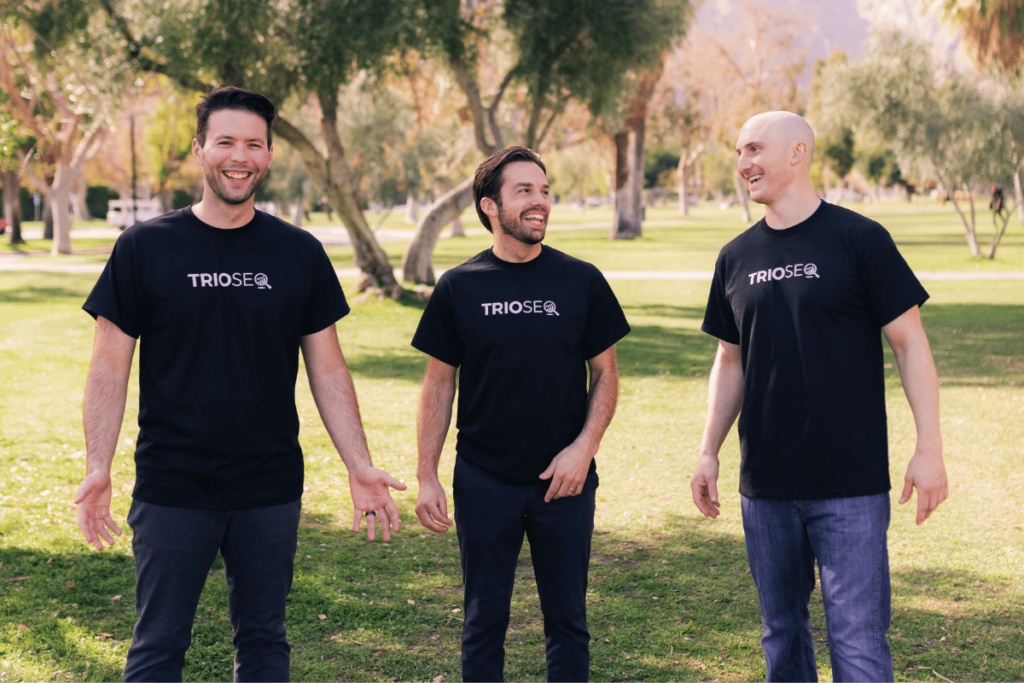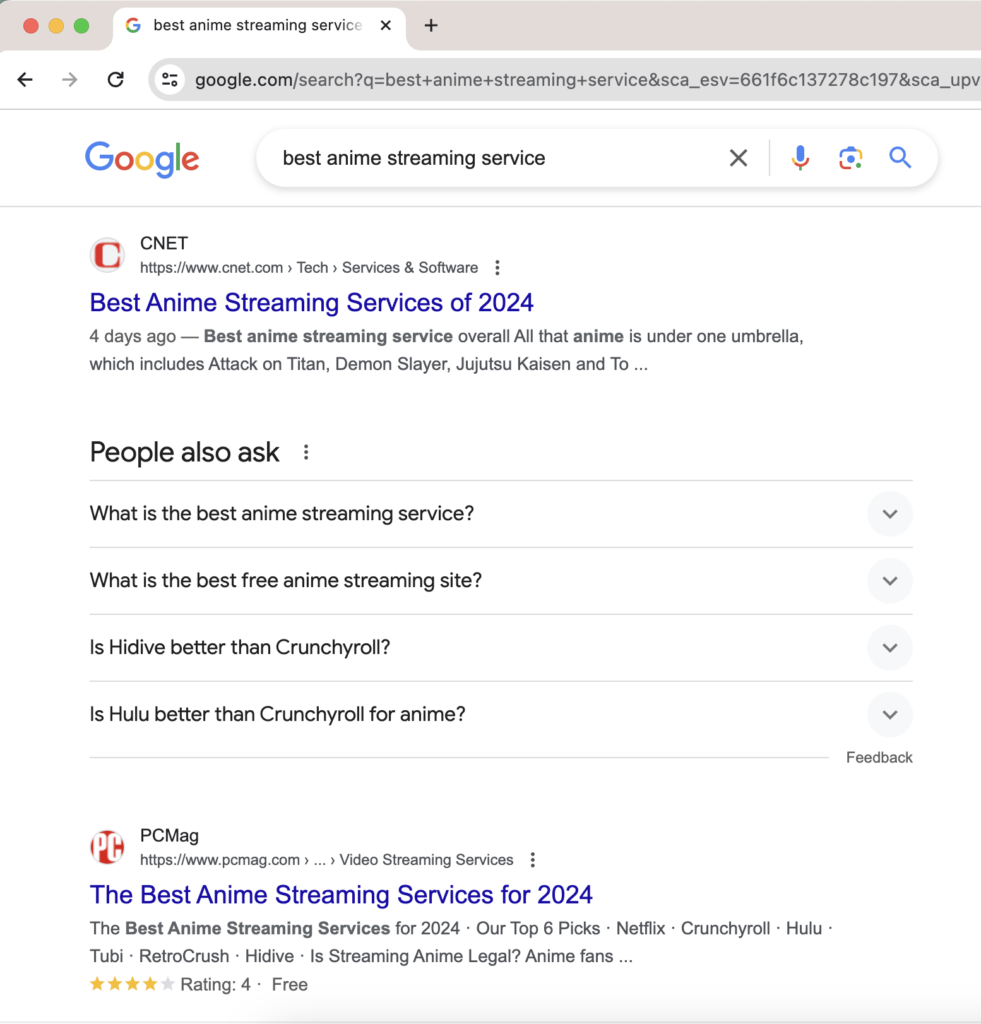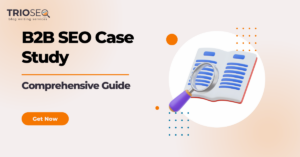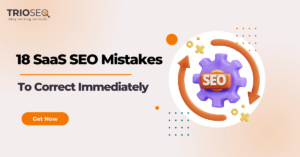Curious about how to do SEO for your SaaS company? You’ve come to the right place.
Since SaaS companies rely heavily on online visibility and traffic, it makes sense to assume that a SaaS SEO strategy is no different from that of any other type of business.
However, while general SEO principles and best practices still apply, an SEO strategy for SaaS is unique.
In this article, we’ll show you what sets SaaS SEO apart from your typical SEO strategy and how to leverage it to skyrocket your online visibility.
TL;DR – SaaS SEO Strategy
Don’t have the time to read the full article? Jump right into creating a SaaS SEO strategy with these 5 steps:
- Set your goals and key metrics
- Develop buyer personas
- Conduct keyword research
- Outrank your competitors with better content
- Perform on-page, off-page, and technical SEO
The article below takes a deeper look into these steps. So, if you’re here to learn more about SEO for SaaS companies, read on.
Is SEO too complicated for you? Connect with us at TrioSEO – a trusted SaaS SEO agency – to generate targeted leads via SaaS SEO optimization.

What is SaaS SEO?
SaaS (software as a service) SEO optimizes a SaaS website to drive quality traffic strategically and convert visits into revenue.
SaaS businesses often rely on organic traffic to boost visibility and generate new leads, making SEO a vital tool for growth.
Why is SaaS SEO Strategy Different?
SaaS SEO differs from a typical SEO strategy because it focuses on generating new leads and nurturing existing customers to maintain a long-term relationship with a brand.
Saas companies (especially B2B) typically have really complex buyer journeys. The decision-making process requires an understanding of technical features, integration capabilities, and approval from multiple stakeholders.
Due to this, content often needs an educational focus, with the goal of informing potential customers about the problems the software solves rather than just selling a product.
Also, while a typical SEO strategy ensures that your website gets more attention in the form of traffic and clicks, SaaS SEO may also focus on conversions.

The Importance of SEO for SaaS
SEO is what gets the word out about your brand, puts your products and services in front of your target market, and broadens your reach – practically everything you need to drive revenue!
Let’s elaborate on its benefits for your company:
-
Lower customer acquisition costs: Sound SEO helps SaaS companies maximize organic channels for acquiring new customers and allows for more sustainable acquisition strategies.
-
Long-term growth: The effects of a well-executed SEO strategy can compound over time, leading to sustained growth in traffic, brand awareness, and customer acquisition. This helps to reduce the churn rate, which is a key issue that SaaS companies face.
- Data-driven insights: SEO can also provide valuable data and insights into customer behavior, market trends, and the effectiveness of your content. This information can inform product development, marketing strategies, and customer service improvements. It can also pave the way for new features and solutions.
- Attracting potential customers: SEO allows SaaS businesses to cast a wide net to capture their target market. It also ensures that potential customers are educated about a company’s benefits.
To keep your customers satisfied (and subscribed), they need to appreciate your product’s value.
If you’re not confident about implementing a robust SEO strategy yourself, it’s best to get help from the pros. Choose a reliable SEO company that can build and execute an SEO plan tailored to your business’s needs.

Step-by-Step SaaS SEO Strategy
On to the good part: let’s dive into SaaS SEO strategy with these 5 steps:
1. Set Your Goals and Key Metrics
As with any strategy, you must establish your objectives before executing your plan.
The key is setting clear, actionable, and realistic goals.
Once you have established what you want to achieve, identify the metrics or key performance indicators (KPIs) that will help you gauge where you are in terms of achieving your objectives.
If you’re confused about the difference between metrics and KPIs, think of it this way: metrics measure the performance of business processes. On the other hand, KPIs are metrics that specifically align with your business objectives. They track the overall performance of your business.
For example, if your goal is to boost revenue, you’ll want to look at your monthly subscribers and income. Your KPIs could include conversion rates and MRR (monthly recurring revenue).

2. Develop Buyer Personas
Buyer personas are characters you create to represent segments of your target audience. They help you craft content that resonates with each segment and ensure that you address your audience’s unique pain points.
To create accurate buyer personas, closely examine your existing customer base and gather the following data:
- Demographics: Includes age, location, gender, and economic status.
- Interests: What do they spend their time on? What values do they uphold or resonate with?
- Needs: Challenges and pain points that your software can address.
- Behaviors: Which social media platforms or websites do they visit? What do they engage with?
Let’s say you’re a SaaS company offering order fulfillment services to online business owners. One of your buyer personas could look like this:
- Name: Jane
- Age: 30
- Social status: Married, with 3 kids, online shop owner
- Educational background: College degree
- Online activities: Online shopping, online selling
- Social networks: TikTok, Instagram, Facebook
- Interests: Cooking, make-up, home essentials, gardening
- Goals: Increase profit, make order fulfillment easier
- Challenges: Self-fulfillment of orders, longer order fulfillment times, delivery delays

3. Conduct Keyword Research
Now, it’s time to research the keywords you need to target in your content. The idea behind keyword targeting is to bring your brand in front of your target audience when they use search queries related to your software.
This way, you invite organic traffic and encourage people to engage.
But how?
Here are a few things to keep in mind:
- Target keywords related to your customer’s pain points: Go on Google and look at what people are searching for in relation to the kind of solution you provide. What challenges do they try to overcome? What needs do they want to be met? Target informational keywords related to those.
- Understand the types of keywords you need to target: There are several types of keywords (such as informational, commercial, and navigational). Knowing which categories your keywords fall under will help you create content that matches the intent behind these queries.
- Target keywords for specific levels in the marketing funnel: There are three layers in the marketing funnel (top, middle, and bottom).
At the top of the funnel, people become aware of a problem and research ways to solve it. To attract those at this stage, you’ll need informational keywords.
The middle layer is where potential customers are weighing their options. This is an opportune time to use those comparison keywords.
Once potential customers reach the bottom layer of the marketing funnel, they are seriously considering your brand and want a nudge to make a decision. At this point, transactional keywords work great for driving quality leads.
- Mine SERPs: There’s another way to do keyword research called SERP mining. It involves going to a search engine like Google, typing a list of phrases that you think are relevant to your brand, and seeing what answers pop up.
You can analyze these results to see how your content compares. What can you do better? What are the top pages doing that makes them rank?
For example:

4. Outrank Your Competitors with Better Content
Without great content, any SaaS SEO strategy will fall apart. Remember: your competition is putting out content. They are also probably optimizing their content to make it more visible to potential customers.
The only way you can one-up your competition is by publishing better quality content–not just from an SEO perspective.
Your content has to be valuable to the people who will read it. You’ll know you’ve done that when your content:
- Gives your audience what they need: Wherever they are in the customer journey, your potential customers should find your content engaging, helpful, and informative. If you’re trying to create top-of-the-funnel content, it should provide answers and solutions.
- Is well-written: People naturally appreciate thoroughly researched, well-written, and carefully delivered content. Quality content also fosters credibility and trust. So, yes, take that extra time to ensure your pages (especially your commercial ones) are error-free!
- Is optimized: Part of great content is delivering value not just to the reader but to the bots, particularly search engine bots that crawl the web and index web pages. Implement SEO best practices, such as using keywords in strategic areas like the title and meta description.
If your inner wordsmith is struggling to create content that meets both your readers’ needs and important SEO criteria, our article-writing services at TrioSEO can take that burden off your shoulders.
With over 10 years of SEO experience, we can analyze your content, find the right keywords, and craft top-notch articles to drive more sales.

5. Perform On-Page, Off-Page, and Technical SEO
Your website is your biggest asset if you have a SaaS business. But it won’t be the gold mine it’s supposed to be unless you work to make it so.
This is where on-page and technical SEO come in.
On-page SEO is all about your content. It’s the process of optimizing your content to match the search intent and help search engines understand what the content is about.
Off-page SEO involves activities outside your website, like backlink building, guest blogging, and social media management.
Technical SEO, on the other hand, is the process of building a backend structure that allows a website to rank. These include making a site mobile-friendly, enhancing site speed, and implementing HTTPS.
How to Measure the Success of Your SaaS SEO Strategy
The last step in a SaaS SEO strategy is measuring its success. Here’s how to track its performance:
1. Conduct an SEO Audit
An SEO audit is a detailed evaluation of your website’s SEO health. It analyzes SEO performance issues and looks for opportunities for improvement.
If you’ve never done an SEO audit before, you need one ASAP–ideally before you start your campaign.
2. Evaluate Campaigns Based on KPIs
Monitor KPIs to identify how important aspects of your SEO strategy are doing.
There are countless metrics you can look at, but you only need to track the ones that affect your goals and objectives.
For example, you can track KPIs like your monthly recurring revenue and average revenue per user to monitor your company’s profitability.
3. Track Your SaaS SEO Performance
Some areas are vital to a successful SaaS strategy, such as:
- Customer satisfaction: Metrics like churn rate, customer satisfaction score, and customer retention rate will tell you how likely your existing customers are to keep subscribing to you.
Remember that to be a successful SaaS company, your customers should keep finding value in your service. Having a high churn rate (or sign-ups that disappear after a short period) is a sign that your customers aren’t happy.
- Organic traffic: Pay attention to not just how many people visit your site but also the quality of the traffic and where it’s coming from.
Doing so will help you evaluate whether you’re effectively reaching your target market and gaining customers. For your SaaS company to thrive, you need to ensure visitors convert–and that starts with quality traffic.
- SERP rankings: One indicator that your strategy is working is your ranking in the search engine results pages (SERPs) for the keywords you’re targeting.
You can track your SERP rankings using tools like Ahrefs, Google Analytics, etc.
- Conversion rate: Ultimately, unless your traffic converts, it’s just people slipping through your fingers. To calculate your conversion rate, divide the number of conversions by the number of visits.
Userpilot reports that the average conversion rate for a SaaS company should be around 7%.
- Click-through rate: CTR tells you the percentage of people who click on your website when it comes up on SERPs.
If your CTR is around 2.39%, you can rest assured that you’re engaging your audience well.

Frequently Asked Questions
Let’s review some of the most commonly asked questions about SaaS SEO strategy below:
What are the Key Components of a SaaS SEO Strategy?
An effective SaaS SEO strategy needs a robust website infrastructure, stellar content, and a thorough off-page SEO plan.
These three tackle the main areas that SaaS companies deal with – building their reputation, attracting new customers, and maintaining customer relationships.
What Role Does Content Marketing Play in SaaS SEO?
Content marketing is integral to a successful SaaS SEO. You can’t have a working SEO plan without a solid content strategy.
Great content – useful, informative, and well-crafted – will help you connect with your target market, attract new customers, and keep existing clients engaged.
What are the Common Challenges in SaaS SEO and How to Overcome Them?
Unlike other businesses, SaaS companies rely on long-term customer relationships. So, sign-ups are good. However, they can only really make an impact when they convert into long-term customers.
Additionally, operating a SaaS company also comes with unique challenges:
- Highly competitive keywords: Startups with smaller budgets may find it harder to compete with more established companies that target the same keywords.
The solution lies in thorough keyword research and creating much better content than your competition.
- It takes a while for SEO strategies to work: In a fast-paced marketplace, business owners can find that extremely frustrating. Still, stick with it. Ethical SEO naturally takes time. But when results do appear, they benefit you in the long term.
- Keeping your audience engaged can be tricky: SaaS companies that offer highly specialized software or advanced technology may also find it difficult to find ways to engage their audience.
What is the Best Way to Stay Up-to-Date with SaaS SEO Trends?
Stay updated on current trends by joining online communities, forums, and groups. Reputable blogs, like Google’s The Keyword, and newsletters are also good sources of information.
Conclusion
Effective SaaS SEO is like any SEO strategy–but with a twist.
Knowing how to plan for, create, and execute a SaaS SEO strategy focused on converting clicks to sign-ups and ensuring those sign-ups stay for the long haul is crucial.
Fired up to see it happen for your business? Why not let the pros do it for you? TrioSEO has over 10 years of SEO experience and has worked with businesses in various industries, including SaaS.
Work with us, and let’s build the best SEO strategy for your business!


![Featured Image - How to Build the Best SaaS SEO Strategy [5 Steps]](https://trioseo.com/wp-content/uploads/2024/04/How-to-Build-the-Best-SaaS-SEO-Strategy-5-Steps-1024x536.png)

![Featured Image - Mental Health Content Writing [Best Practices and Ethical Considerations]](https://trioseo.com/wp-content/uploads/2024/05/Mental-Health-Content-Writing-Best-Practices-and-Ethical-Considerations-300x157.png)
![Featured Image - Beginner’s Guide to CBD Content Writing [Tips Included]](https://trioseo.com/wp-content/uploads/2024/05/Beginners-Guide-to-CBD-Content-Writing-Tips-Included-300x157.png)

![Featured Image - [Ultimate Guide] SEO For Tech Companies That Outranks Competitors](https://trioseo.com/wp-content/uploads/2024/04/Ultimate-Guide-SEO-For-Tech-Companies-That-Outranks-Competitors-300x157.png)

![Featured Image - B2B SaaS SEO - Ultimate Guide [Strategy Included]](https://trioseo.com/wp-content/uploads/2024/04/B2B-SaaS-SEO-Ultimate-Guide-Strategy-Included-300x157.png)

